
If you want perfect SEO, you have to optimize for RankBrain.
Why?
It is because Google has recently announced that RankBrain is the third most important ranking signal of Google.
And it is becoming more important day by day.
In today’s guide, you are going to learn everything you need to know about Google’s RankBrain algorithm. Let’s do this.
- CHAPTER 1 Google RankBrain: A Visual Explanation
- CHAPTER 2 How RankBrain Works
- CHAPTER 3 Keyword Research in a RankBrain World
- CHAPTER 4 How to Optimize Titles and Description Tags for CTR
- CHAPTER 5 How to Optimize Your Content For Bounce Rate & Dwell Time
- CHAPTER 6 Bonus RankBrain Optimization Strategies and Case Studies
CHAPTER 1:Google RankBrain: A Visual Explanation
What is Google RankBrain?
RankBrain is another Google algorithm that is a machine learning (AI) and it helps Google to sort the search results. In addition, it also allows Google to process and understand the search queries.
So what is making RankBrain different?
In past, before the arrival of RankBrain, 100% of Google’s algorithm was hand-coded. So the process went like this:
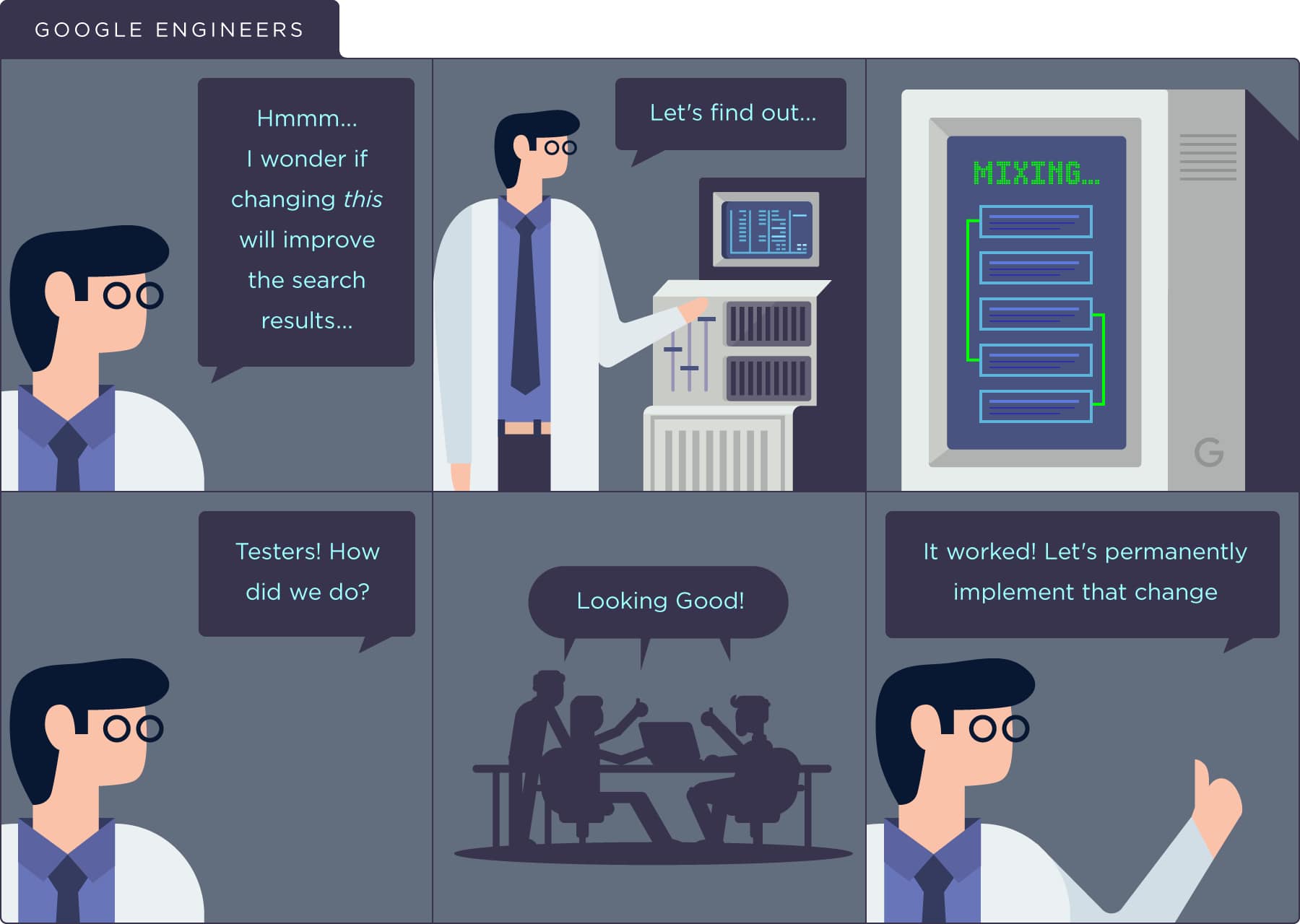
Human engineers are still working on Google algorithm. But along with them, RankBrain is also doing its duty.
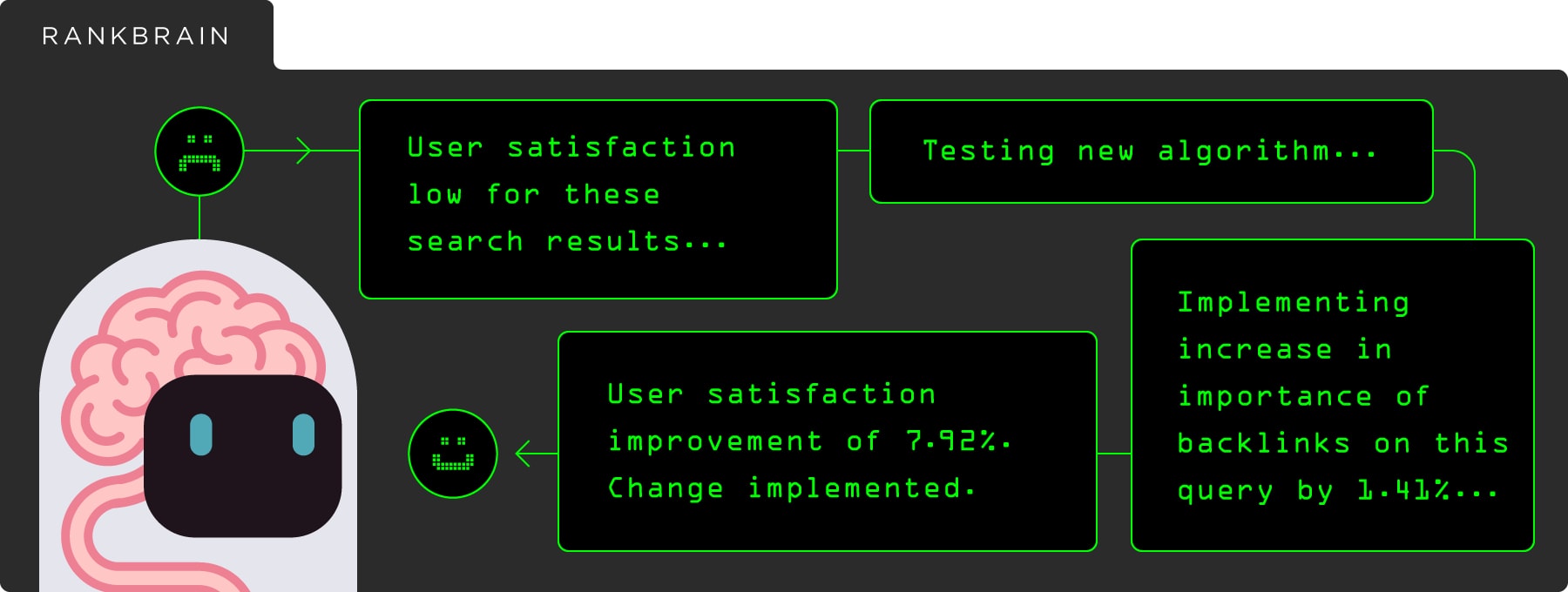
In short, RankBrain moves the algorithm on its own.
RankBrain has the ability to increase or decrease the importance of backlinks, content length, content freshness and domain authority and it all depends on the keyword.
It pays attention to Google searchers interaction with the new search results. If the user likes the new algorithm better, it stays. If he does not, RankBrain rolls back the previous algorithm.
Here’s the craziest part:
Google asked a group of Google engineers to identify the best page for a given search. And they also asked RankBrain.
And RankBrain performed better than Google engineers by 10%.
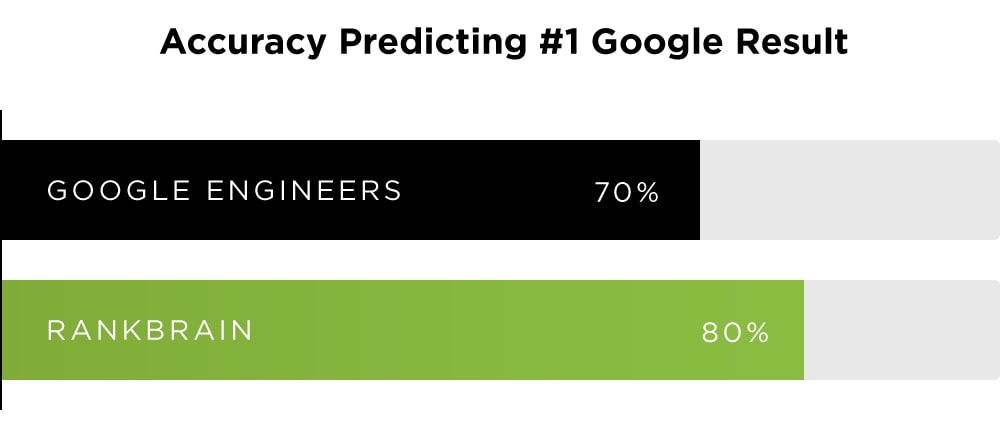
So RankBrain works and it will stay.
So you have seen what is RankBrain, now let’s go to the deeper level to see how it works.
CHAPTER 2:How RankBrain Works
RankBrain has two main jobs:
- Understanding search queries (keywords)
2. Measuring how people interact with the results (user satisfaction)
Let’s see them one by one.
How RankBrain Understands Any Keyword That You Search For
A few years ago, Google was having a problem:
15% of the keywords that people type in Google were never there before.
You may not consider 15% a lot. But when it comes to the searches of billions per day it is something you cannot avoid.
Before the arrival of RankBrain, Google was scanning pages to see if there is an exact keyword for that query.
But the queries or keywords were brand new. Therefore, Google had no idea what the searcher wanted, so they guessed.
For example, you put a query ‘the grey console developed by Sony’. Google will scan pages to find the pages that consist of these terms ‘grey’, ‘console’, ‘developed’ and ‘Sony’.

Today, RankBrain knows and understands your queries. So it gives you 100% accurate set of results:
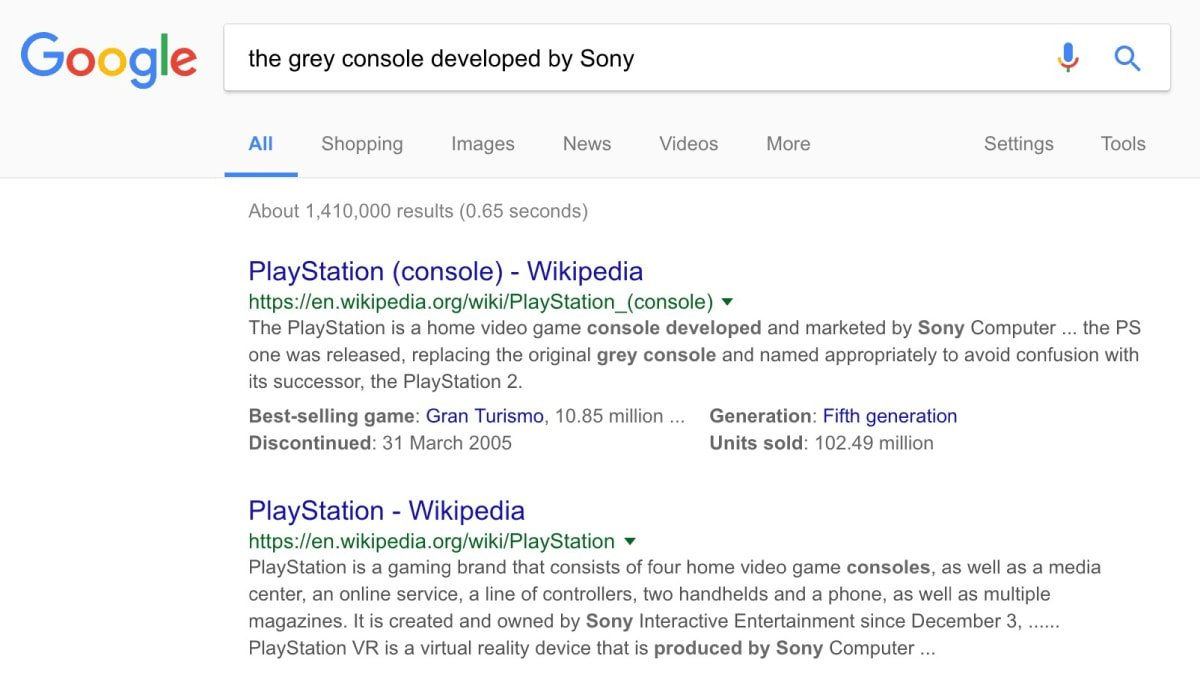
Not bad.
What changed? In Past, Google would try to match the terms in your search query to pages or words on a page.
But today, RankBrain tries to understand what do you mean. You can say like a human.
How?
By matching never-before-seen keywords to keywords that Google has known in past.
For example, Google RankBrain may have noticed that a plenty of people search for “grey console developed by Nintendo”.
And it has learned that people who look for ‘grey console developed by Nintendo’ want to see a set of results about gaming.
So when someone puts a keyword ‘the grey console developed by Sony’, RankBrain brings the same results to the query it already aware of (‘grey console developed by Nintendo’).
So it will display the results about consoles. In this case, the PlayStation.

Another example: a while back Google published a blog post to let you know how they use machine learning to understand the intent of searcher:
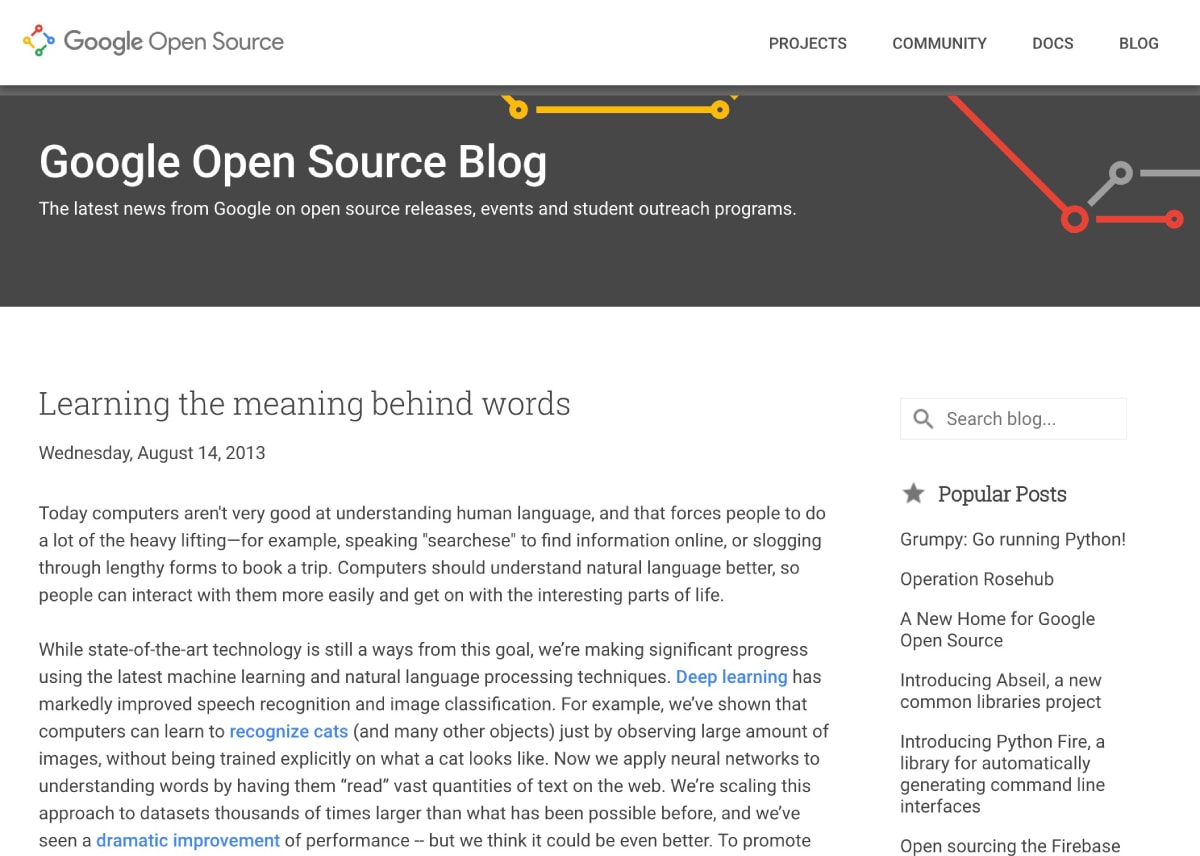
In that post, they come up with a technology known as ‘Word2vec’ that turns the keywords into concepts.
For example, according to Google, this technology knows that France and Paris are related the same way Germany and Berlin are (capital and country), and not the same way Italy and Madrid are.
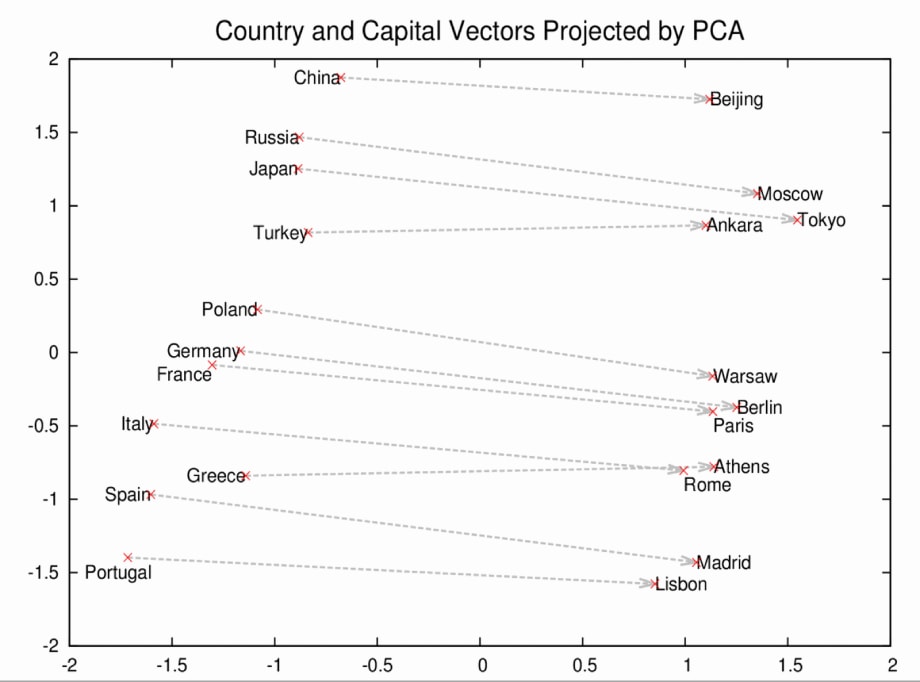
This post was not talking about RankBrain but RankBrain also uses the same technology.
In a nutshell, Google RankBrain goes beyond simple keyword matching. It can turn the search queries or terms into concepts and tries to find the pages that cover the concept.
In chapter 3, I shall show you how this changes the way you should do SEO keyword research. But first of all, you need to know the most interesting element of RankBrain that is, what RankBrain does?
How RankBrain Measures User Satisfaction
Sure, RankBrain makes an attempt to understand new keywords. And it can even move the algorithm on its own.
But the big question is:
Once RankBrain shows a set of results, how does it know if they are actually good?
Well, it observes:
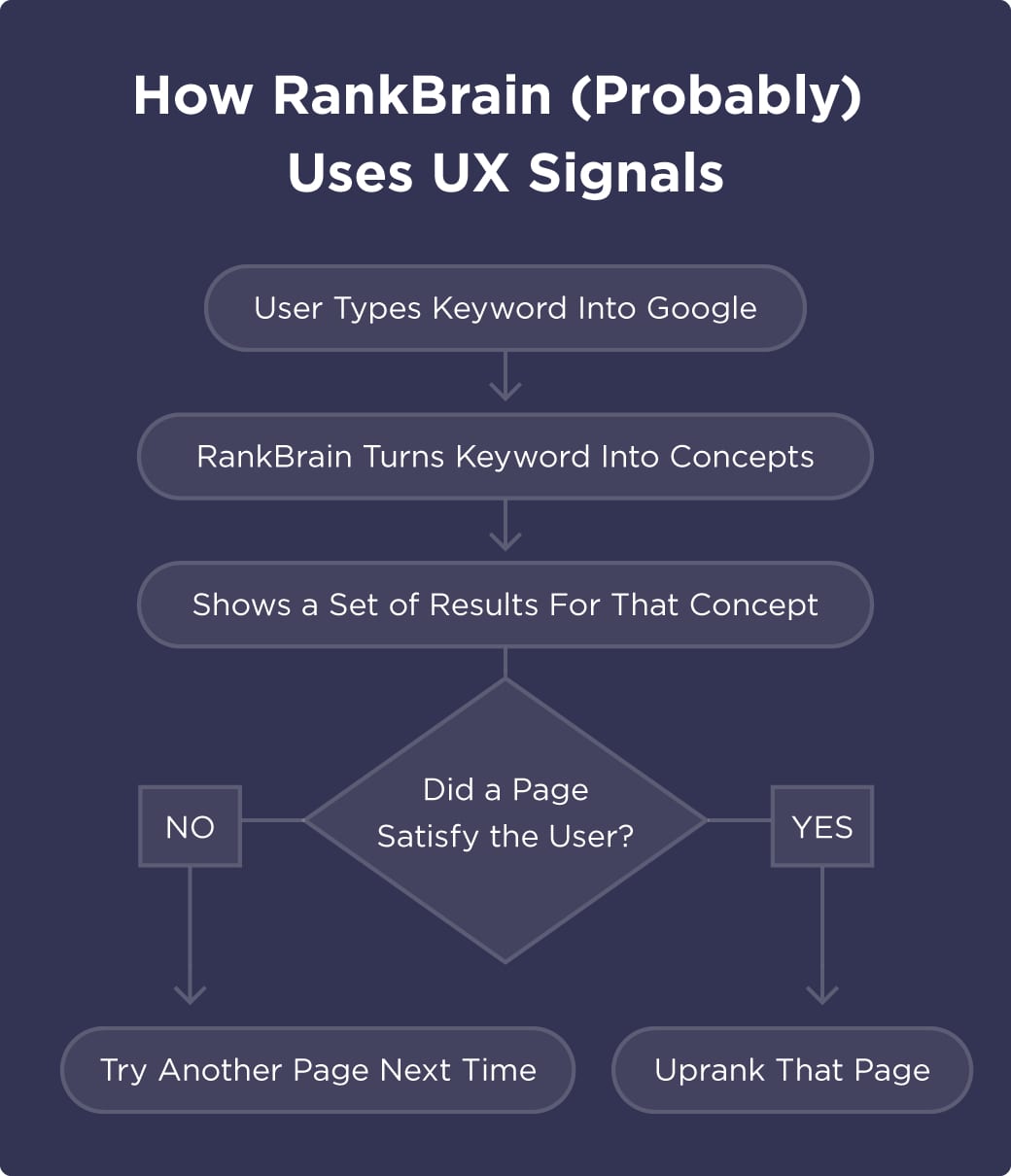
In short words, RankBrain will show you a number of results that it knows that you will like. If a number of people like a particular page in the results, it will give it a boost in rankings.
And if you hated it, it will drop the rankings of that page and replace it with a different result or page. When the next someone will search for that keyword or similar terms, it will also observe how it goes or performs.
What is RankBrain observing exactly?
It pays heed to how you interact with the search results. It gives attention to these things:
- Organic Click-Through-Rate
- Dwell Time
- Bounce Rate
- Pogo-sticking
These are also known as user experience signals or (UX signals).
Let’s see an example:
You pulled a muscle in your back while playing tennis. So you will search the term ‘pulled back muscle’ in Google.

Like most of the people, you will click on the first result. Unluckily, the intro is full of filler content. So you will hit the back button to see the 2nd result:
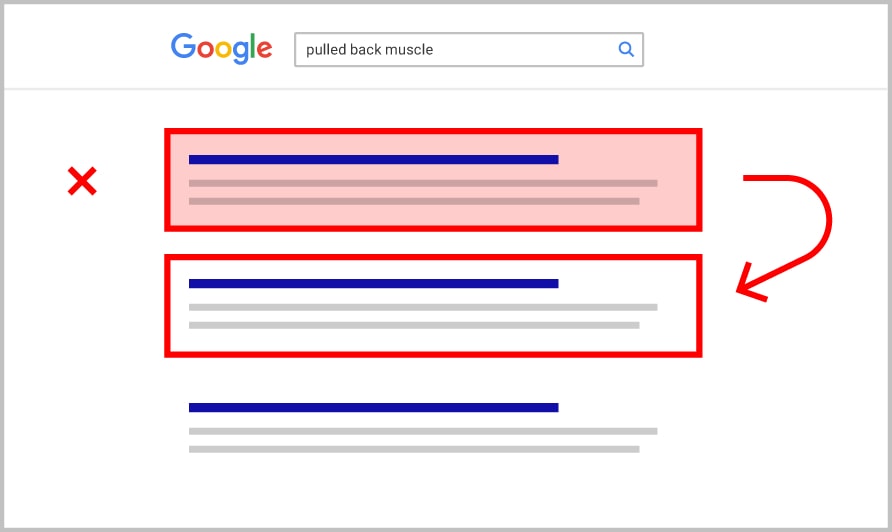
This is also not better. It is full of advice like rest and ice your back.
And for the second time, you press the back button and open the 3rd result.
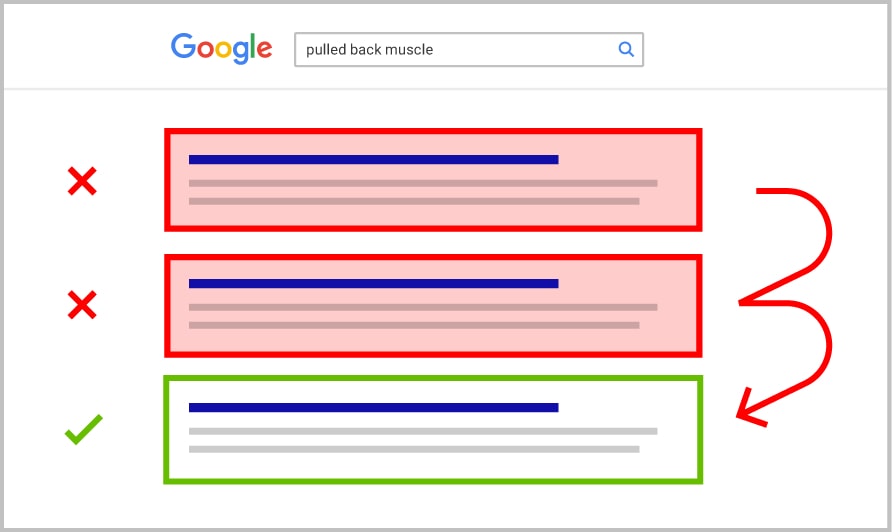
Yes, this result is what you are searching for.
So instead of pressing the back button, you spend quality time to read that page, their therapy routine. So you have got what you wanted and you will not visit the search results again.
This back-and-forth is known as ‘pogo-sticking’. RankBrain also pays attention to it.
If Google will notice that People are leaving the page and clicking the next result so it will send a strong message to Google: ‘That page sucks’
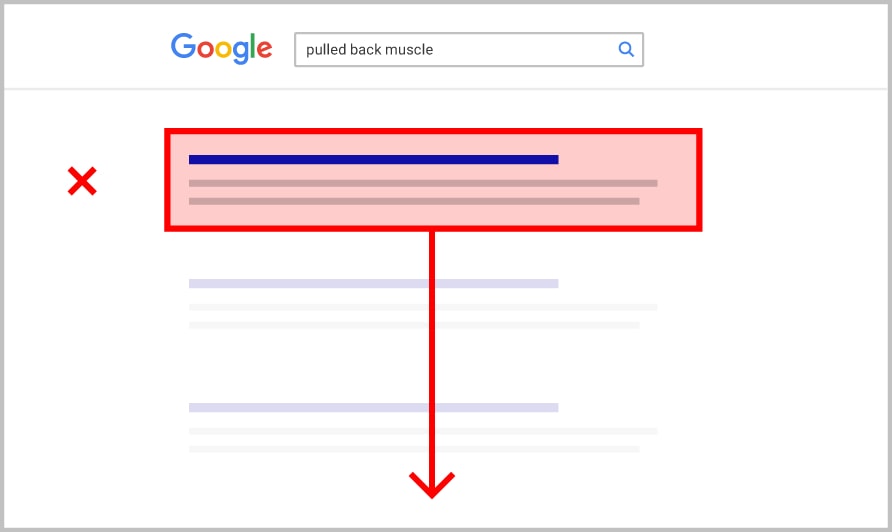
In addition, if Google also notices that a plenty of people stop pogo-clicking on a specific page, they will rank it higher in the search engine.
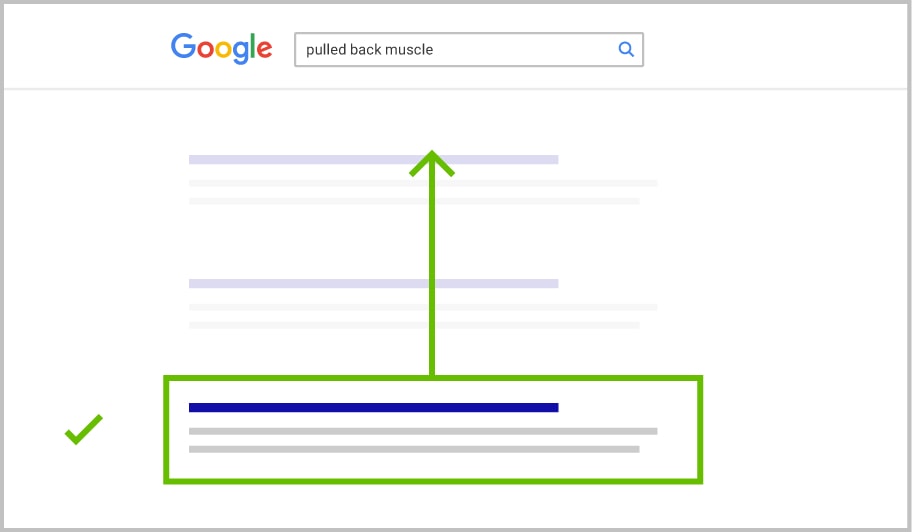
You will also learn more on optimizing for UX signals in chapter 4 and 5. But now you need to learn how RankBrain changes how keyword research works?
CHAPTER 3:Keyword Research in a
RankBrain World
As I described, Google now understands the intention behind a keyword or query.
Does it mean traditional keyword research is dead?
No.
The above discussion is to make changes to your keyword research process to make it RankBrain friendly.
Here is how:
Ignore Long Tail Keywords (They are Obsolete)
Long tail keywords are dead.
In past, it was sensible to make hundreds of different pages, each one is optimized for a unique keyword.
For example, if you create a page optimized for ‘best keyword research tool’ and other post for ‘best tool for keyword research’.
Old Google would rank it for their individual keywords or long tail keywords.
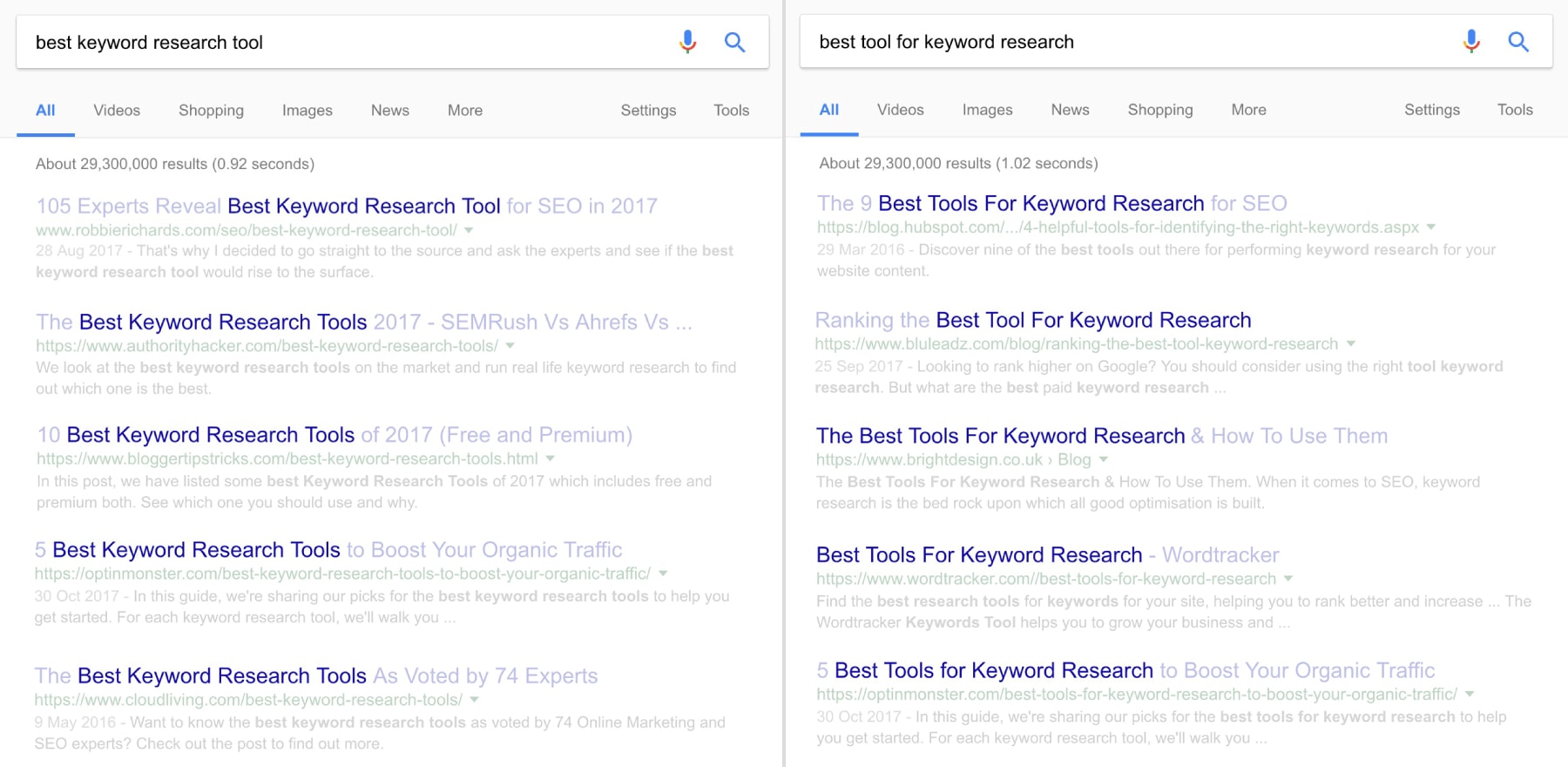
Today, RankBrain knows that these terms are similar. So it will show ideal or identical search results for that query or search term.

In a nutshell, optimizing for long tail keywords is not sensible anymore.
What should you do instead? Keep reading…
Optimize Around Medium Tail Keywords
Instead of using long tail keywords, I suggest using content for medium tail keywords.
Medium tail keywords are middle of the pack terms. They get more search volume as compared to an average long tail. They are also not insanely competitive.
For example, here are a number of keywords for ‘Paleo Diet’ topic. The terms available in the middle are medium tail keywords.
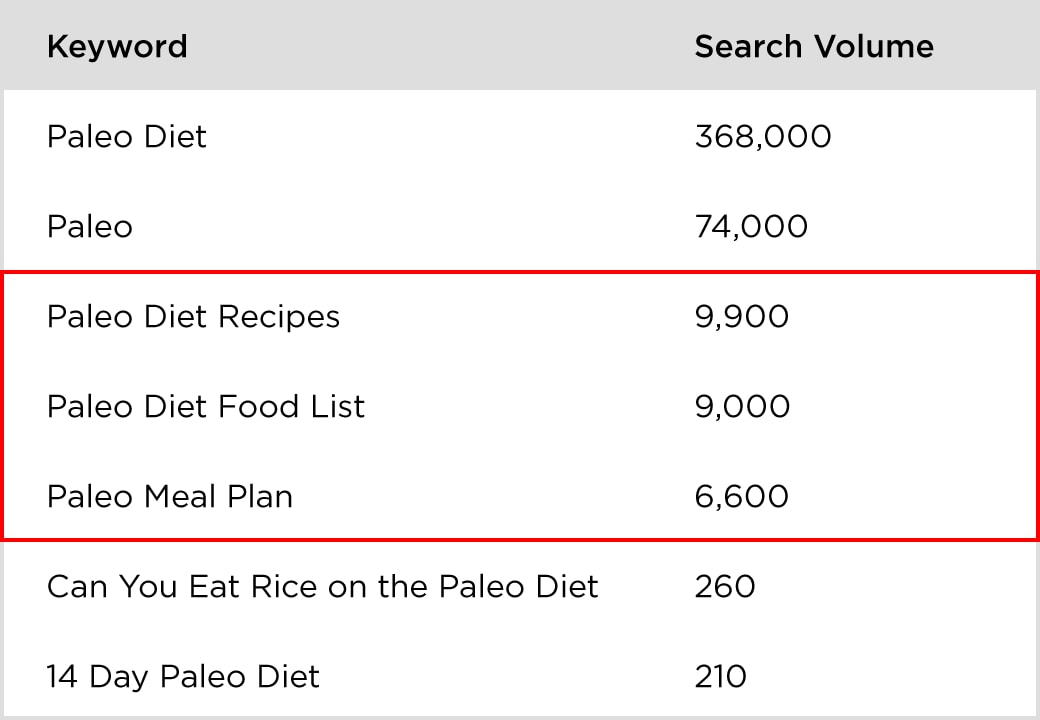
When you optimize the page using a medium tail keyword and make it awesome. RankBrain will boost your ranking for that term automatically and thousands of same keywords.
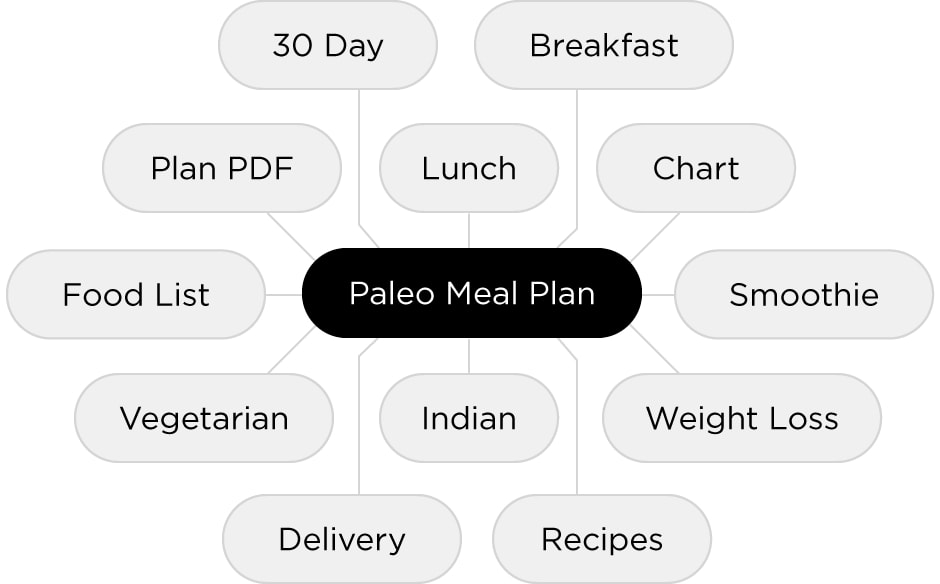
In short, I suggest optimizing your page for a single keyword.
Just make sure that it is a medium tale keyword.
Then, RankBrain will rank the single page for multiple related keywords.
CHAPTER 4:How to Optimize Titles and
Description Tags for CTR
As you observe in chapter 1, organic CTR is the main RankBrain ranking signal.
Here the question comes into mind:
How can you get people to click on your result?
I am going to tell you this in this chapter.
Pack Your Title Tags With Emotion
There is no doubt in saying that emotional titles get more clicks.
Copywriters are aware of this fact for years. Recently, this data is supported by data. According to Coschedule, they found a clear relation between highly emotional headlines and social shares.
For example, here is an SEO optimized title tag:
Productivity Tips: How to Get More Done
That is not bad. But it is not pushing people to click on it.
Here is how you can turn that title tag into an emotional title while keeping it SEO-friendly:
Crush Your To-Do List With These 17 Productivity Tips
Now it is not that you can always make highly emotional titles. But whenever you can, you should go for it.
Add Brackets and Parentheses to the End Of Your Titles
This is my all-time favorite CTR trick.
I have found this tip from a research that Outbrain and Hubspot did a few years back.
By dong that research they analyzed almost 3.3 million headlines. And they found that brackets perform better than bracketless titles by 33%.

Here are some examples of brackets you can use:
(2024)
[Infographic]
(Case Study)
(Proven Tips)
(New Data)
[Report]
I hope that you get the trick.
Use Numbers (And Not Just on List Posts)
The data from different sources prove such as BuzzSumo that numbers can improve CTR.
The best part?
You can use numbers in your title… even if your content is not a list post.
Use Power Words Into Your Title Tags
Power words are terms that consist of serious emotions.
You guessed it: using Power Words will help your title to get more clicks or CTR.
Here is a list of some of my all-time favorite Power Words:
Effective
Insane
That Will
Case Study
Examples
Proven
Study
New
Powerful
Do not Forget to Optimize Your Description Tag for CTR
Yes, it is because they are not helpful in SEO directly now. So an optimized description can boost your click through rate.
Here is how to create a description tag that gets results:
1: First, make it emotional.
Like title tag, you should use your description tag to show some emotion.
Here is an example:

2: Next, sell WHY someone should click on your result.
Is your content comprehensive?
Is it based on research?
Funny?
Use that in your description:

3: Then, copy words and phrases that paid ads (AdWords) use.
For example, when I search for “bone broth” I see this phrase is available in two ads:
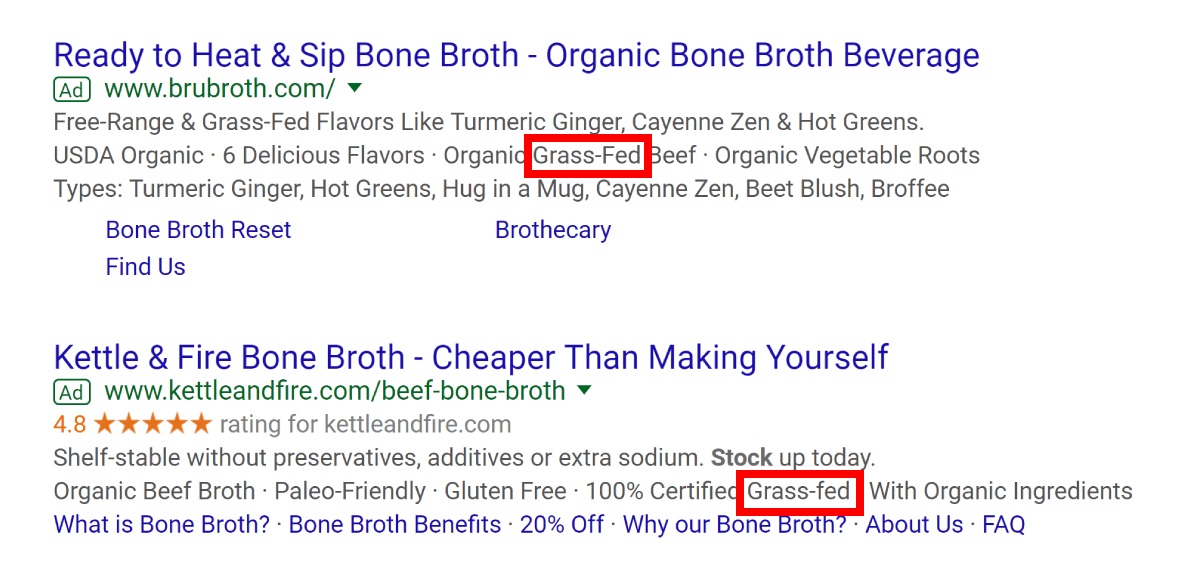
So you will like to add the phrase ‘grass fed’ in your meta description.
4: Finally, include your target keyword.
Google will make it bold when someone will search it and it will help your result to stand out:

That is it.
CHAPTER 5:How to Optimize Your Content
for Bounce Rate and Dwell Time
So they were the CTR boosting tips. More and more people will click on your result than ever before.
Now you need to make the Google realize that your result is making the people happy.
You need to improve your dwell time to do that and it is the best way.
Does Google REALLY Use Dwell Time? Yes!
Dwell time is the amount of time Google user spends on your website after clicking on your result.
When the user will spend more time on your time, it will tell Google that people are liking this page so boost it.
And someone bounces it within a couple of seconds, it tells Google this result sucks! Google will drop its ranking.
So RankBrain will measure the dwell time on your result and will shuffle the results accordingly.
In fact, a Google works recently said that Google used to rely on (100%) off-page signals especially backlinks. Even though Google is still using backlinks:
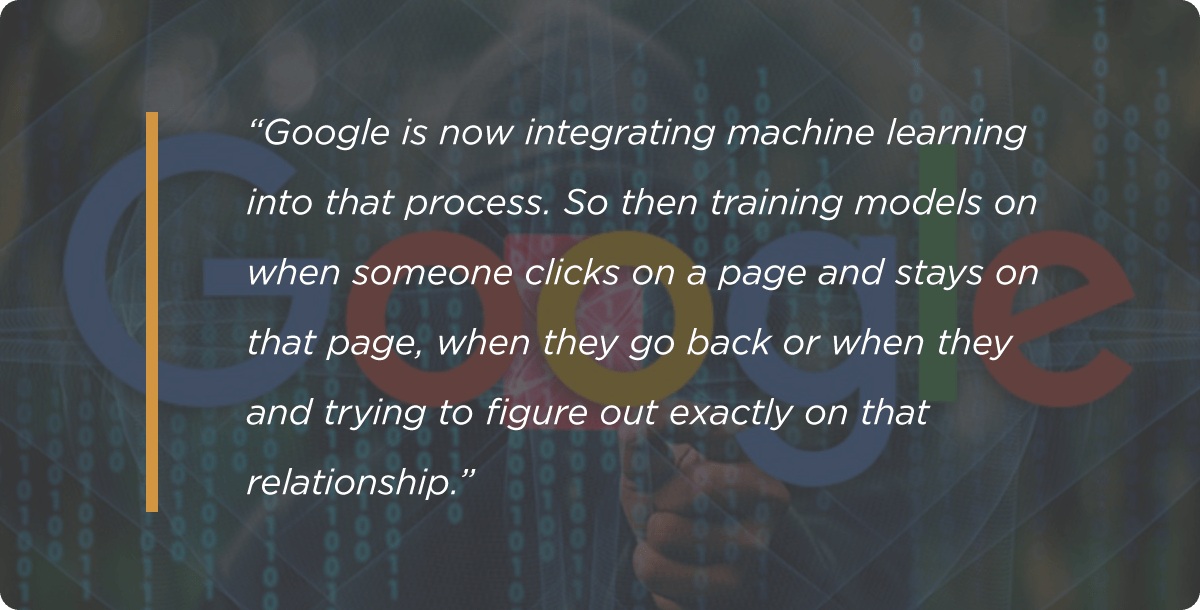
When I analyzed a massive set of Google search results I found a correlation between low bounce rate and high rankings.
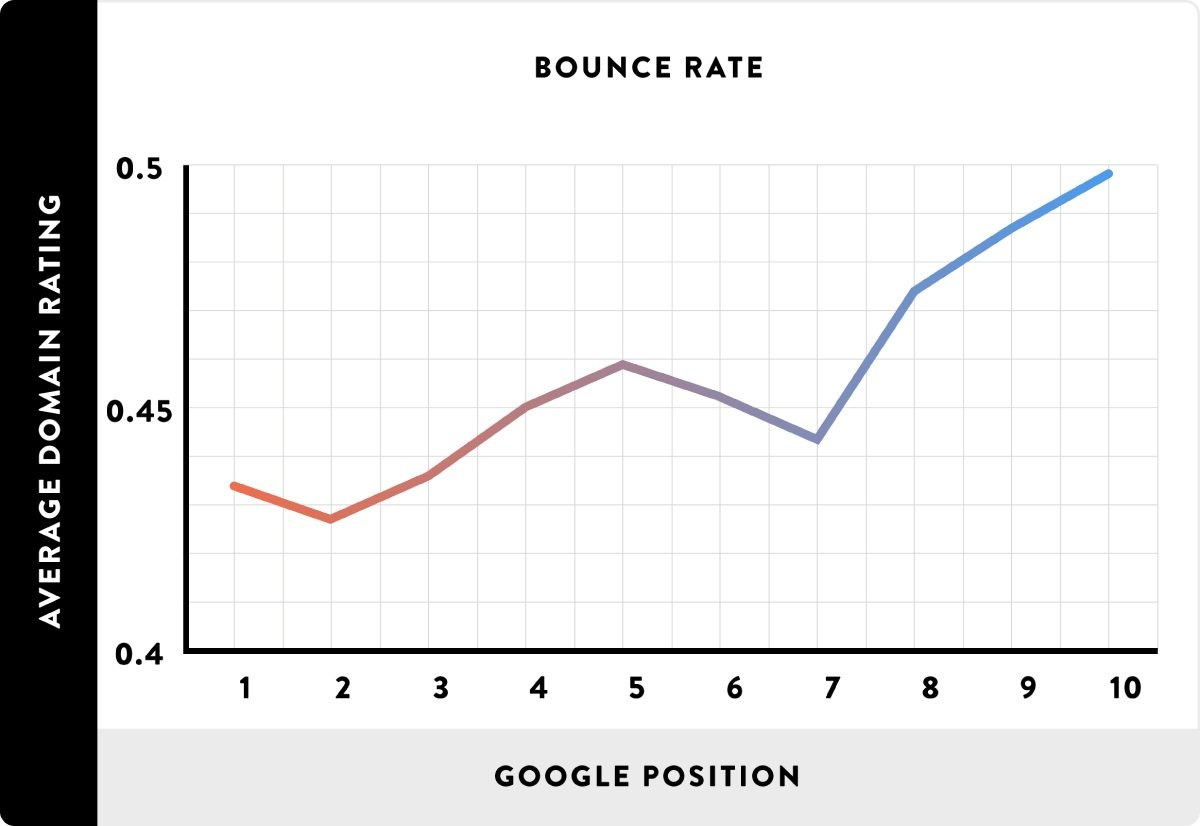
How to Reduce Bounce Rate and Boost Dwell Time
Now I am going to share a few simple strategies that can help you to increase the dwell time of your website.
1: Push Your Content Above the Fold
When someone clicks on your result from Google, they want the answer to their question right there.
In other words, they do not want to scroll down your page to read your content
Therefore, I highly suggest removing anything.that pushes your content below the fold for example:
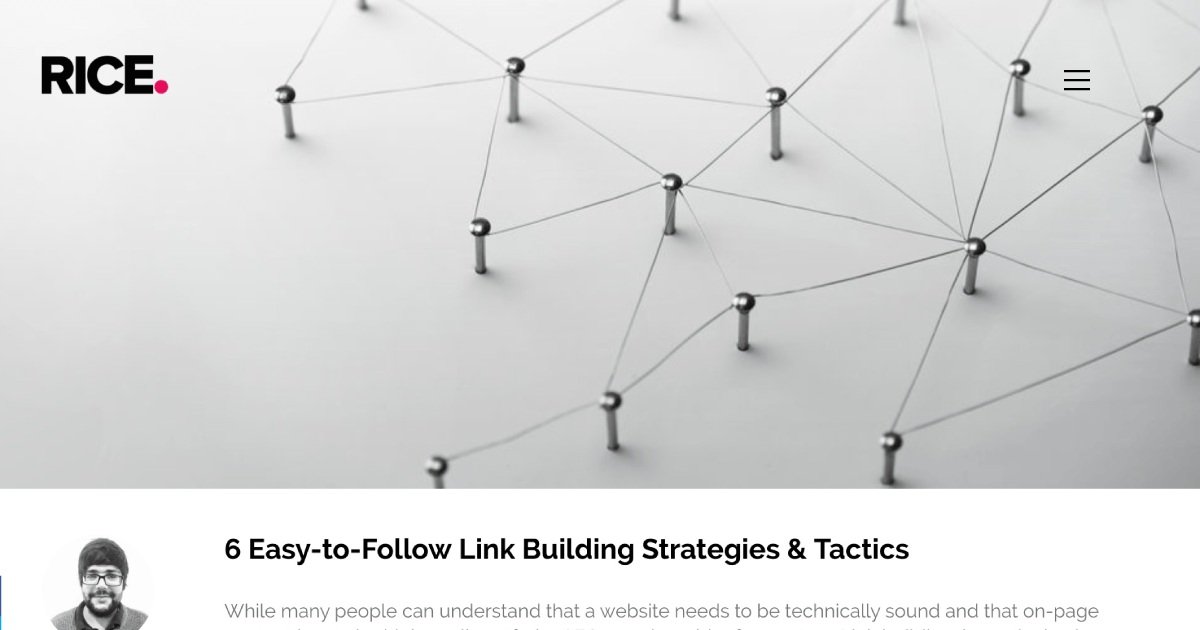
That way you will lose your reader immediately.
2: Use Short Intros (5-10 Sentences MAX)
I prefer using short intros and pay more attention to it rather than headlines.
It is because your intro is where 90% of the users will make choice to stay or go.
After doing a lot of research and testing, I recommend using short intros.
Why?
When someone Google for something, he already know about the topic.
Therefore, there is no need for massive intro.
When someone Google for ‘White Hat SEO’ read that intro he thinks: I am in the right place.
3: Publish Long, In-Depth Content
This is the best way to increase your dwell time.
Longer content=More Dwell time
It is because a person who will read a 2000 words guide will take longer than 500 words blog post.
But that is only part of the equation.
There is another reason that long form content gets more dwell time is that longer content can answer the queries of the searcher in an extensive way.
For example, let’s suppose that you search for “how to run a marathon”.

And the first result that you will click is a 400 words post. It will answer your question but it can leave you to get more.
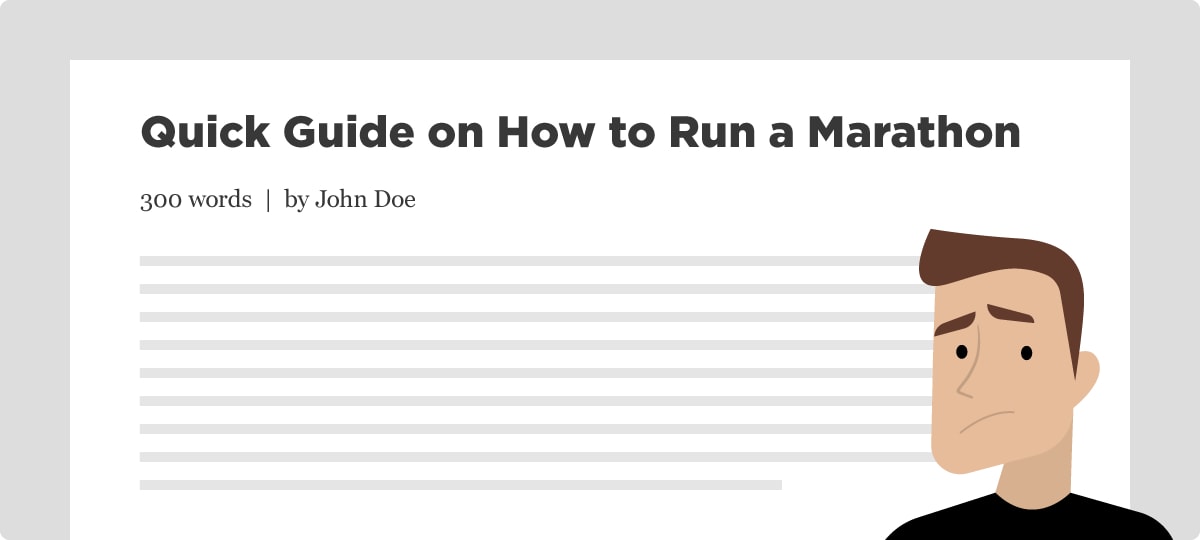
Then you will hit the back button to find better result and you may remember Google calls it Pogo-sticking.
Now on the next result, you find a comprehensive note that covers everything you wanted to know about a marathon.
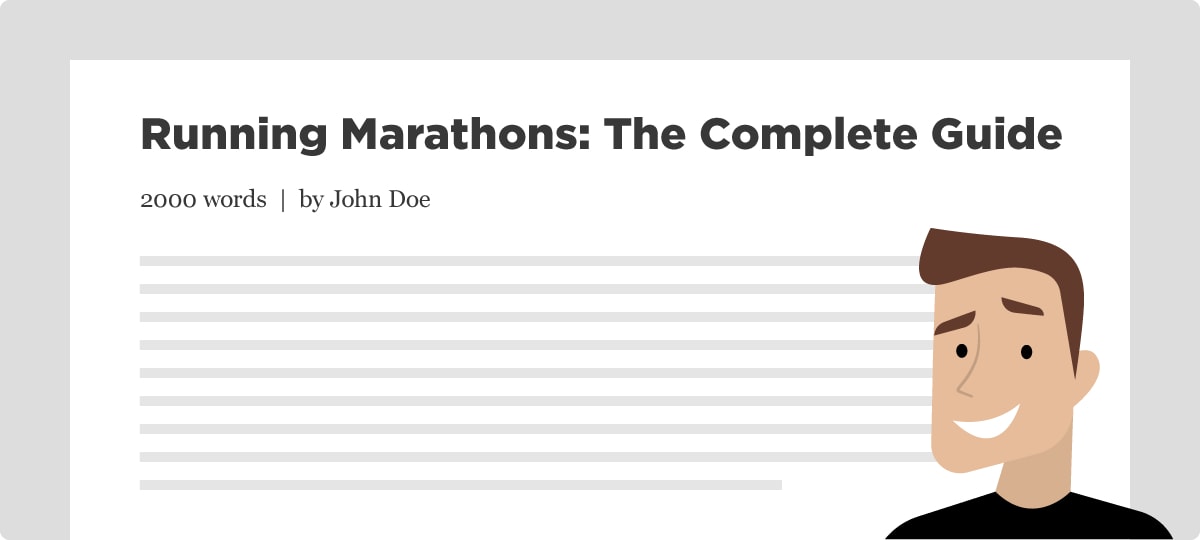
So get a cup of coffee to go through the post from scratch to end. You may re-read some sections. All this reading will lead to high Dwell time.
Most of the time, I try to publish long content and it should be at least of 2000 words.
4: Break Up Your Content Into Bite Size Chunks
Let’s face it:
To read 2000 words is a hard nut to crack.
And if they are presented like a giant wall of text of 2000 words.
Luckily, there is a simple way to cover it by using subheaders.
It will break your content into bite-size chunks and will make it digestible. It also improves readability and improves dwell time.
I use a number of subheadings at Green Hat for this reason.
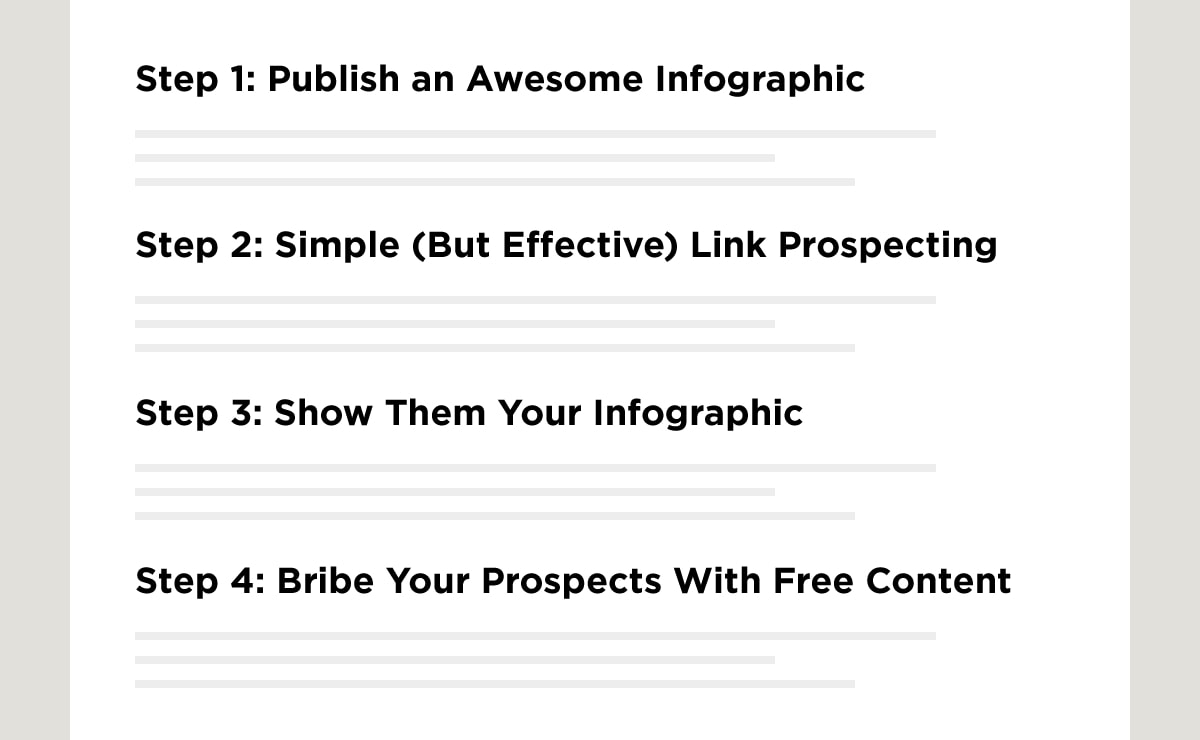
I usually use a subheading after 300 words of content as recommended by Yoast SEO.
Pro Tip: try to avoid boring subheadings like ‘Stay Hydrated’. So use emotions in your subheaders. For example: 2 Simple Backhand Drills the Pros use’ and What is new Research about Hydrated’.
CHAPTER 6:Bonus RankBrain Optimization
Strategies and Case Studies
In this chapter, you will learn a few strategies that will help you to optimize your website for RankBrain.
Increase Brand Awareness. Improve CTR
First of all, improve your organic CTR, I already showed you emotions and numbers how they can affect CTR.
But there is a huge point that I did not mention that is, Brand Awareness.
There is no doubt in saying that if someone knows your brand, he will click on your website in search results. According to the research of WordStream, the brand awareness can increase CTR up to 340%.
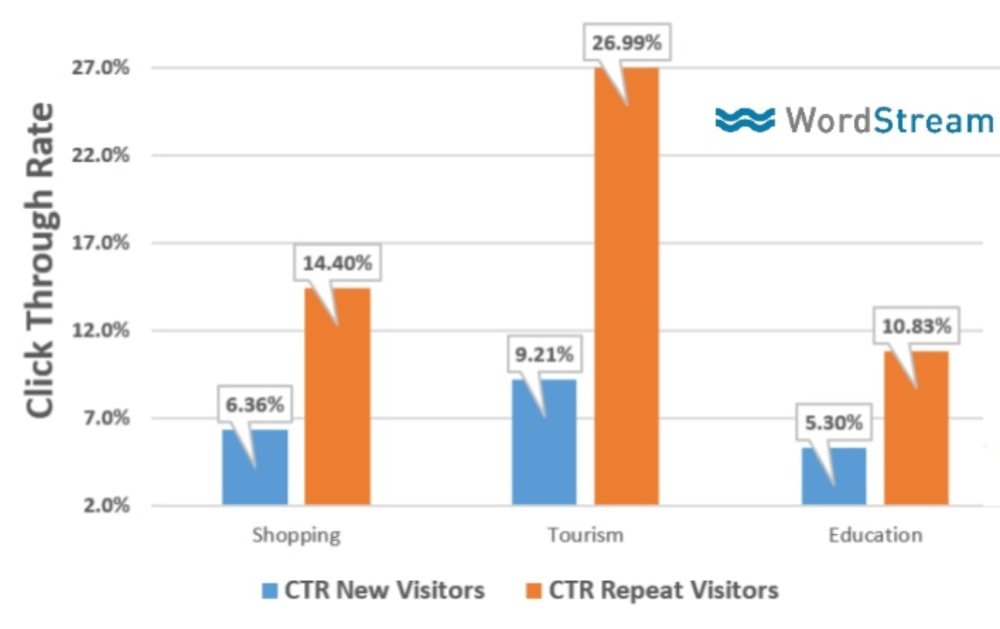
For example, take a look at these search results:
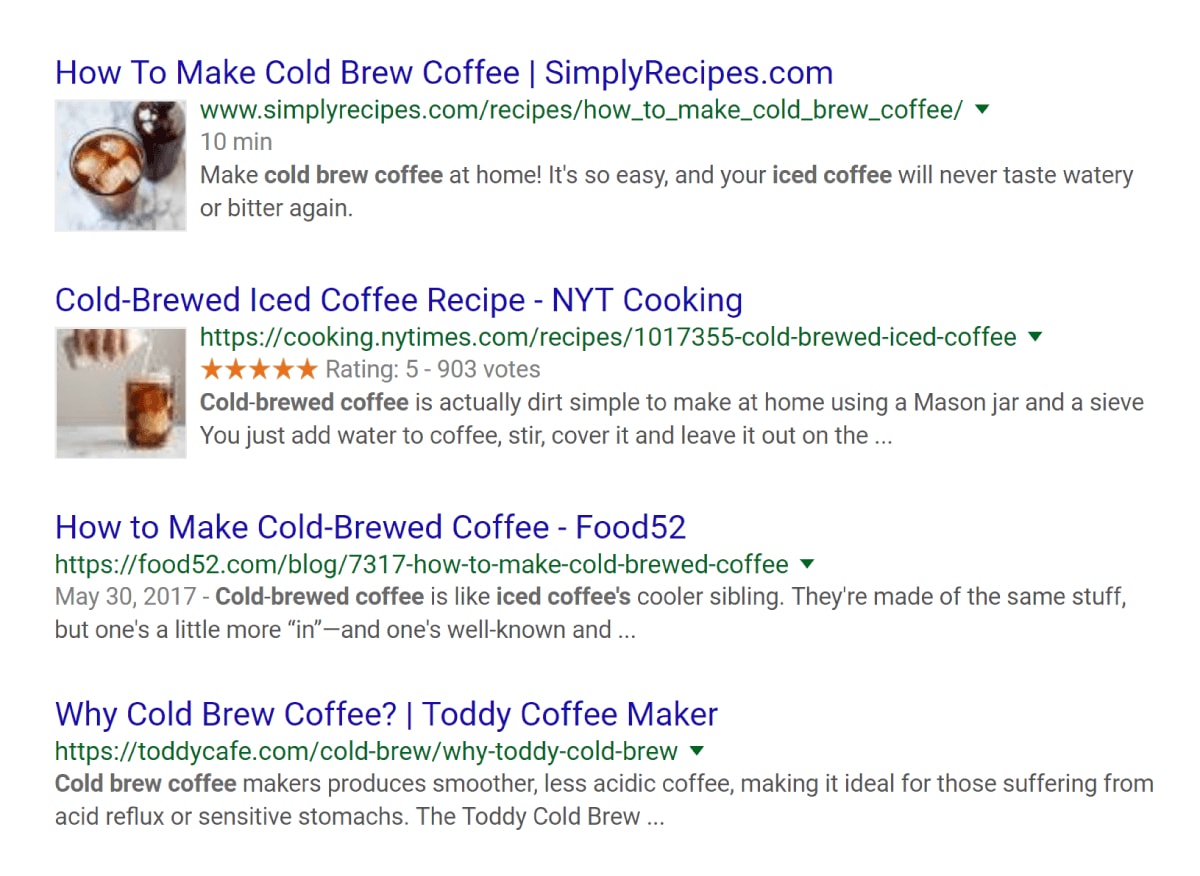
Which two sites are you going to click? NYTimes.com and Recipes of Course!
In short words, you need to make your brand popular among the people before they search in Google.
How to increase the awareness of your brand?
1: First, try Facebook ads.
Even if people do not click, Facebook ads can establish your brand and can put it in front of a number of eyeballs.
And when those people will search anything in search results, they will definitely click on your result.
2: Also, create an insanely valuable email newsletter.
Sending valuable content to the inboxes of people can increase the awareness of your brand.
In fact, my open rates are also above the industry average because I try to send Good stuff:
Image
My subscribers are aware of the fact that my material is the best in the market. When Green Hat expert shows on page 1, people click on my result.
3: Finally, do a “Content Blitz”.
Content Blitz is something when you release a ton of content is a very short period of time. It is a more powerful way.
In fact, I am using a Content Blitz on Green Hat Expert.
I publish guest posts:
Turn “Zeros” to “Heros”
Do you have a post on your site that is not performing as you was hoping?
You need to go back and optimize it for RankBrain, it will give a ranking boost in search rankings.
For example, Sean from Proven.com had a massive guide on his website that was doing OK but not boosting in search engines as he had hoped.
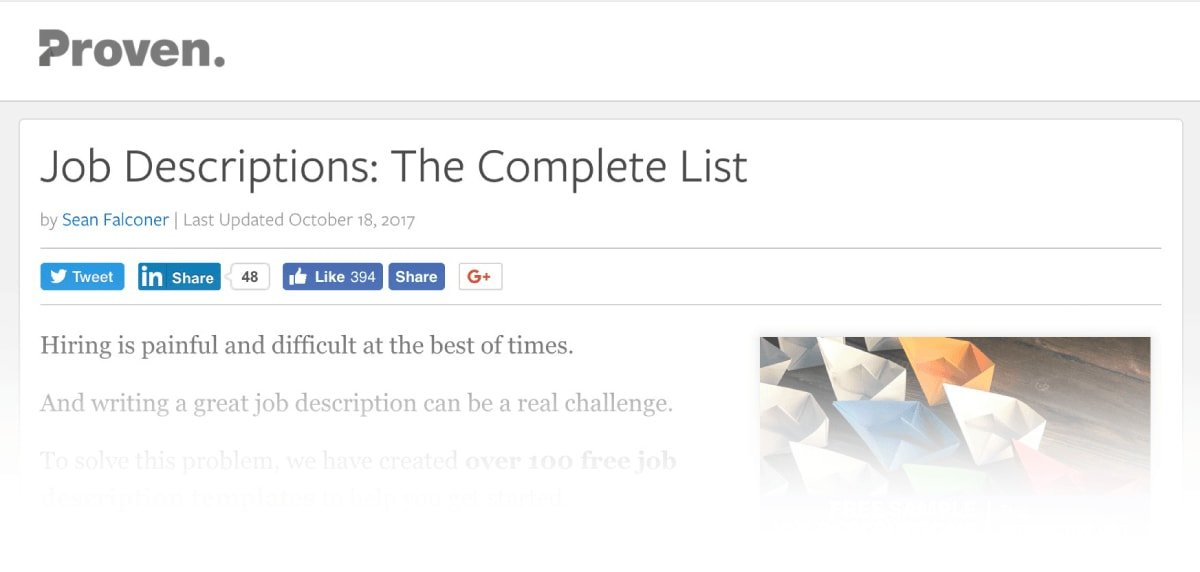
Sean realized that the title tag of his page was not compelling the people to click on it.

So he added a power word, a number, and parentheses to the title tag:

And this change increases the organic traffic of Sean’s that page up to 128%:
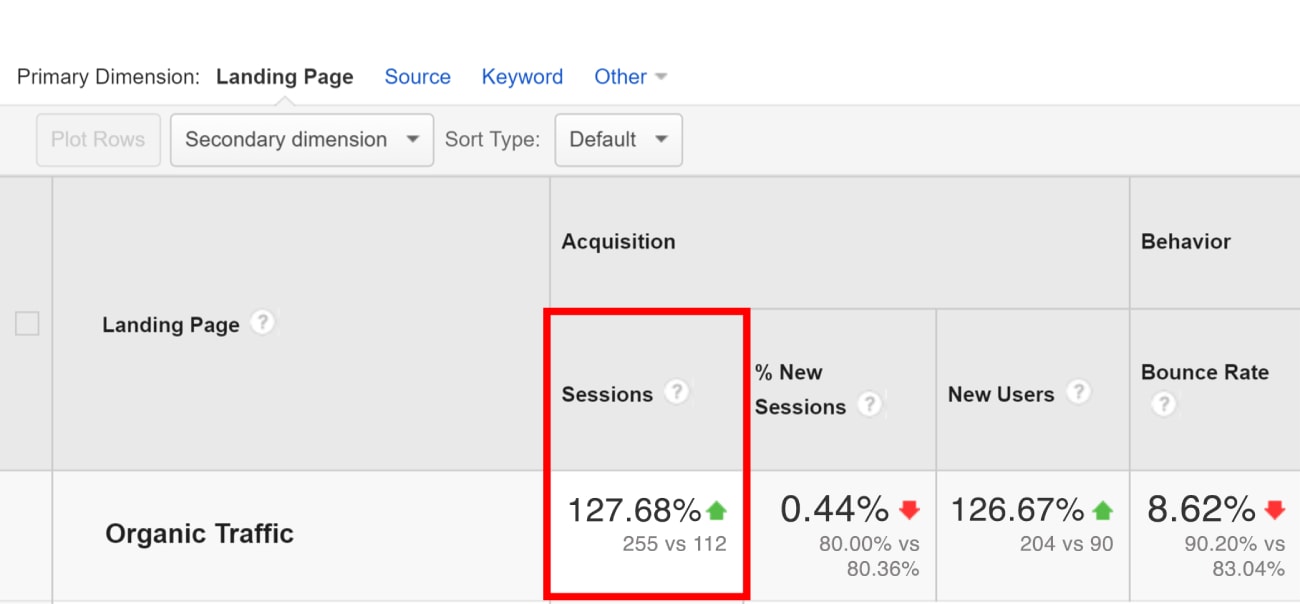
The big part of the story was that RankBrain realized that the CTR increased and boost the page of Sean a few spots:
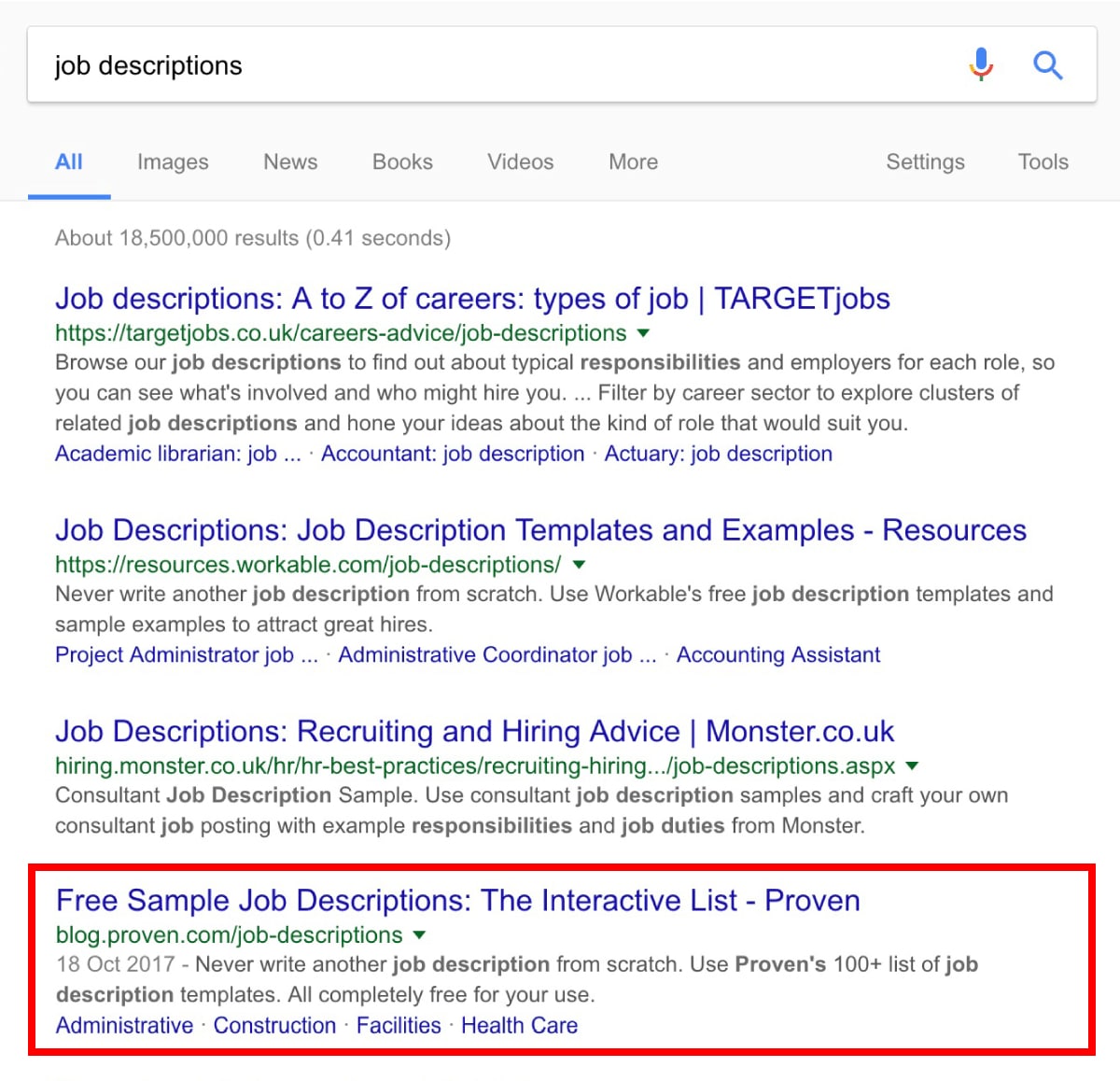
Use LSI Keywords to Fill in “Content Gaps”
LSI keywords are related to the content of your main topic and they are words and phrases.
Why are LSI keywords important?
They make RankBrain able to understand your page entirely.
For example, let’s suppose, you are writing a post on link building.
LSI Keywords are things like:
- Backlinks
- Domain Authority
- Email outreach
- Anchor text
So when RankBrain observes that your page has these terms, it makes it bold to know that your page is about link building.
And now it has increased your chances to rank for those keywords related to that topic.
Use this Watson Natural Language Understanding Tool to uncover LSI keywords.
This tool can analyze the content that you give it for concepts, entities and categories.
For example, when I pasted in the first draft of this post, it spits out concepts which were relevant to RankBrain.
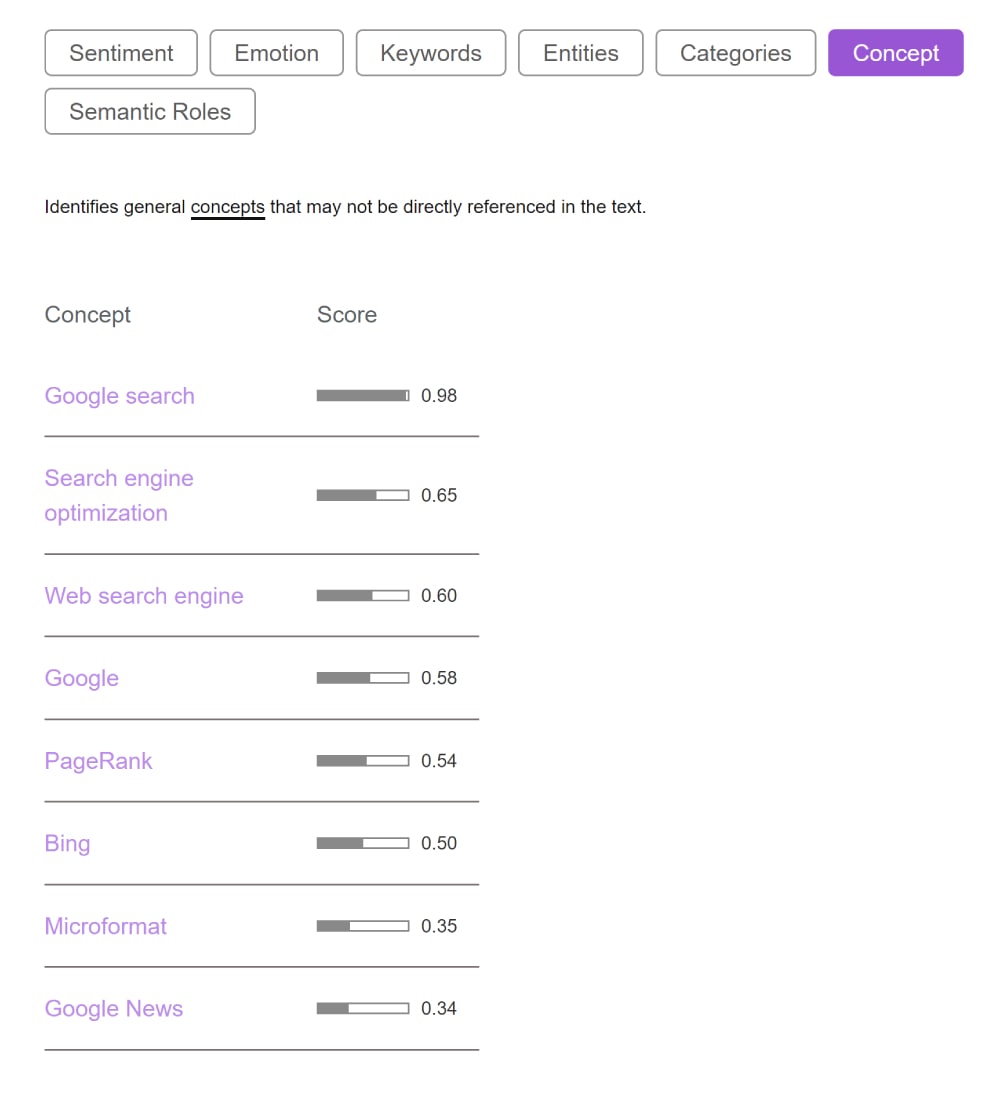
The interesting part is that I have not mentioned many of those terms in this post. Like RankBrain.
When you use these LSI keywords in your post, it will send a signal to RankBrain that your content is comprehensive.
Now It’s Your Turn
I have done a lot of work to complete this post. I hope you liked it.
I want to hear it from you.
What is your #1 tip to implement for RankBrain?
Are you going to use LSI keywords? Focus on CTR?
Or try to improve your Dwell time?
Leave your opinion in the comment section.
Do not forget to share this post.
Arsalan Rauf is an entrepreneur, freelancer, creative writer, and also a fountainhead of Green Hat Expert. Additionally, he is also an eminent researcher of Blogging, SEO, Internet Marketing, Social Media, premium accounts, codes, links, tips and tricks, etc.